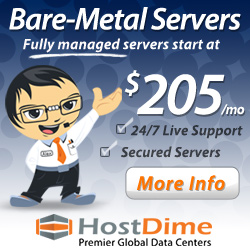Via Threadwatch, it appears that Business.com has attached the rel=”nofollow” attribute to its editorial listings. At the same time, paid listings (the ones that have four additional links underneath them) do not have the rel=”nofollow” attribute. A bit of a controversial move on Business.com’s part seeing that this attribute was originally intended for paid links and not editorial type of links.
Therefore it would appear that Business.com is using the nofollow tag to encourage paid listings. If you do not pay, you may be listed in the directory but a nofollow tag will be applied but if you do pay, they will not apply it. There is a lot of discussion regarding this over at the Threadwatch thread I pointed out above. Here are some of the comments:
“So the link they add for free and probably more relevant and of higher quality are no-follow and the ones that are paid are regular? I wonder how that fits into Matt´s policies? – kservik“
“If it is a case of nofollow for cash, I can’t blame them. How many of us are now considering buying links there at the moment? – Nick Wilsdon“
“Really the reasoning doesn’t matter that much. I just think it muddies their credibility. Alot. – seobook“
“So technically, Business.com is using the no-follow BACKWARDS. Its the paid links that should have the no follow (according to Google) and the unpaid ones are the real votes for credibility. But from Business.com’s standpoint the paid links are the ones that have been fully vetted and therefore “approved”. It’s the non-paid ones that they don’t have much trust in (or no trust in those who add the non-paid links). Classic case of the law of unintended consequences in effect. God Bless the no-follow! – St0n3y“
Shortly after this, Lane Soelberg who is Vice President of Marketing for Business.com chimes in.
“There seems to be some confusion and misunderstanding on how and why Business.com applies “no follow” tags within our site.
Assuring accuracy and relevance of link resources in our directory is a very important part of pointing our users to the right direction. In order to address some of the questions raised around “no follow” tags, I’ve put together an overview on how the “no follow” tag is being used at Business.com:
Featured Listings Clients (Pay-per-click)
• Featured Listing clients advertise on Business.com under a pay-per-click advertising model.
• We strive to deliver them the most qualified traffic.
• These clients DO carry “no follow” tags as one of many methods we use to screen out unqualified search engine bot clicks on our client’s pay-per-click listings.
Directory Inclusion
• New listings submitted for inclusion in our general directory area are reviewed for accuracy and relevance to specific categories in our directory.
• Upon editorial approval, these listings are admitted into the Business.com directory and matched to the appropriate categories by our staff. Directory Inclusion clients are charged $199 per year for listings included in the general directory.
• These listings DO NOT utilize “no follow” tags as they have met our rigorous editorial review guidelines and they are not charged on a pay-per-click basis by Business.com.
Web Listings / Editorial Links
We have thousands of editorial links to online resources in our general directory. These resources have been added over time by our editorial staff because they were considered to be valuable resources in specific subject matters. Checking them for relevance and accuracy is an ongoing process. Editorial listings that have recently been reviewed and approved DO NOT have a “no follow” tag, while those awaiting renewed editorial approval DO have a “no follow” tag.”
There are a couple of things wrong with what he says. First of all where he says, “These clients DO carry “no follow” tags as one of many methods we use to screen out unqualified search engine bot clicks on our client’s pay-per-click listings,” does not make much sense because the nofollow tag does not keep bots from clicking on the listings.
Also where he talks about Directory Listings which they charge $199 a year for, “These listings DO NOT utilize “no follow” tags as they have met our rigorous editorial review guidelines and they are not charged on a pay-per-click basis by Business.com,” these are paid listings so they should contain the nofollow if Business.com is going to use the attribute correctly, at least as Google intended for its use.
Furthermore I wonder if they are disclosing this strategy to advertisers. A couple of years ago it was discovered that they were selling PPC traffic that was simply Yahoo paid inclusion listings with an inflated price tag. They would submit listings via Yahoo’s Site Submit program and then charge their advertisers an inflated price all while not disclosing where the traffic was “really” coming from.
Therefore this current move doesn’t really surprise me. Is it a bad move on their part? Maybe not because if search engines treat the attribute as they are supposed to, it will actually give a benefit to those paying for listings over those who are just there by good luck.








